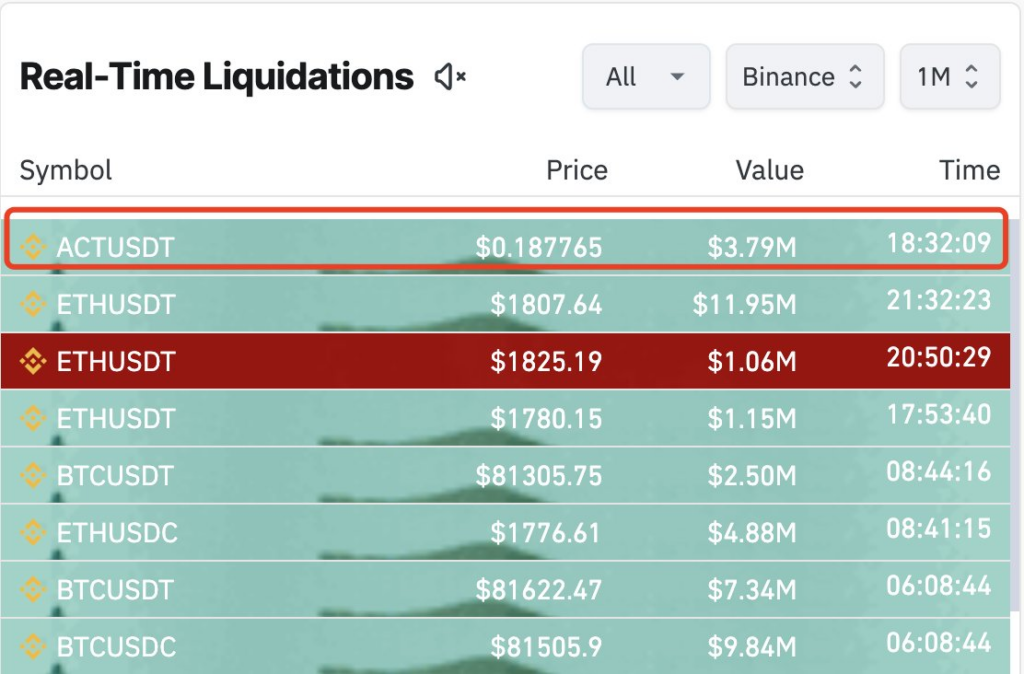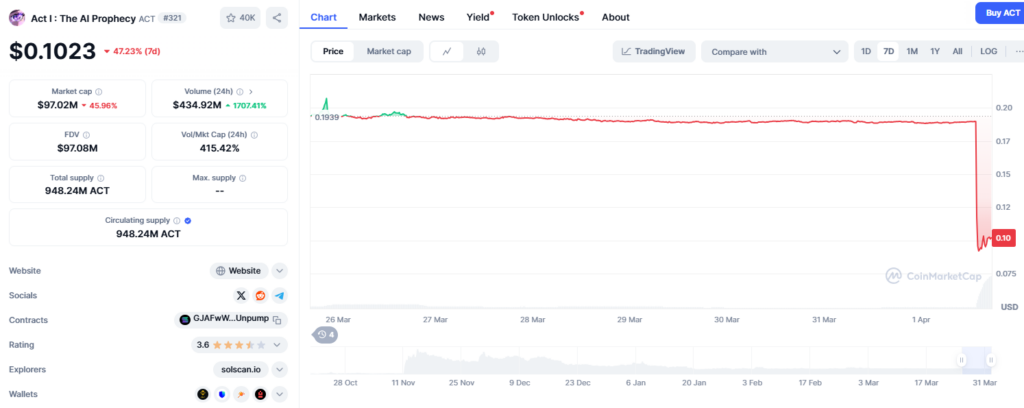A cryptocurrency trader suffered a $3.79 million loss after Binance unexpectedly updated leverage and margin tiers for select tokens.
One of the affected tokens was Act I (ACT), where the trader’s $3.79 million position was liquidated at $0.1877, according to the latest on-chain data retrieved by Finbold from Lookonchain on April 1.

After the liquidation, one of the largest for the day, ACT experienced a massive price drop. As of press time, the token was trading at $0.1018, down 46% in the last 24 hours and nearly 50% on the weekly timeframe.

This price collapse has compounded losses for those still holding leveraged positions.
Notably, the ripple effects of the ACT liquidation extended beyond the token itself, impacting the broader altcoin market, especially those tied to artificial intelligence (AI) projects.
Binance futures update
The trading platform revealed the changes in a blog post, announcing updates to leverage and margin tiers for several USDⓈ-M perpetual contracts, including 1000SATSUSDT, ACTUSDT, PNUTUSDT, NEOUSDT, NEOUSDC, TURBOUSDT, and MEWUSDT. Notably, the changes aimed to adjust the risk parameters for futures trading on these tokens took effect on April 1, 2025, at 10:30 UTC.
However, the update came with a warning stating that existing positions opened before the update would be affected, and futures running on the grid might expire due to the new leverage and margin tiers.
Interestingly, the world’s largest crypto trading exchange advised users to review and modify their positions to avoid potential liquidations. Therefore, it can be interpreted that the whale trader in question was caught off guard.
It’s worth noting that in crypto futures trading, leverage allows traders to control larger positions with less capital, but it also amplifies risk.
Margin tiers, on the other hand, determine the required collateral based on leverage and position size. When exchanges like Binance adjust these tiers, they affect leverage limits and liquidation thresholds. If a trader’s position no longer meets requirements, it may be forcibly liquidated, leading to further losses.
Featured image via Shutterstock








